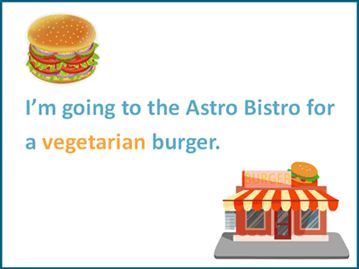There are several ways modifiers operate in sentences. Look at these examples:
She studies in the library.
The student carefully reviewed her answers on the test.
I’m going to the Astro Bistro for a vegetarian burger.
What is a modifier?
A modifier is a word, phrase or clause that gives information about – modifies – another word in the same sentence.
For example:
I’m going to the Astro Bistro for a vegetarian burger.
The word ‘burger’ is modified by the word ‘vegetarian’.

What’s the purpose of modifiers?
Modifiers make a sentence more descriptive and detailed; essentially making the sentence’s meaning clearer, more specific, and more engaging.
For example:
I rode the bus.
This is a simple sentence with no description or detail.
I rode the earliest bus to the beach.
This sentence is more descriptive because of the modifiers it contains.

Where to modifiers appear in sentences?
Modifiers are mostly placed right before or after the noun they are modifying.
For example:
My gray cat likes to sleep.
This is also the case when they’re modifying a verb or adjective:
I bought a sleek gray car.
The teacher told the students to listen carefully to the lecture.
Misplaced modifiers
When modifiers are not in the correct position in a sentence, it makes the sentence’s meaning confusing to read or listen to. We call this a misplaced modifier.
For example:
We bought a cat for my cousin we call Paws.
Who is Paws? Is it the cat or the cousin?
Here’s the same sentence with the modifier in the correct position:
We bought a cat that we call Paws for my cousin.

